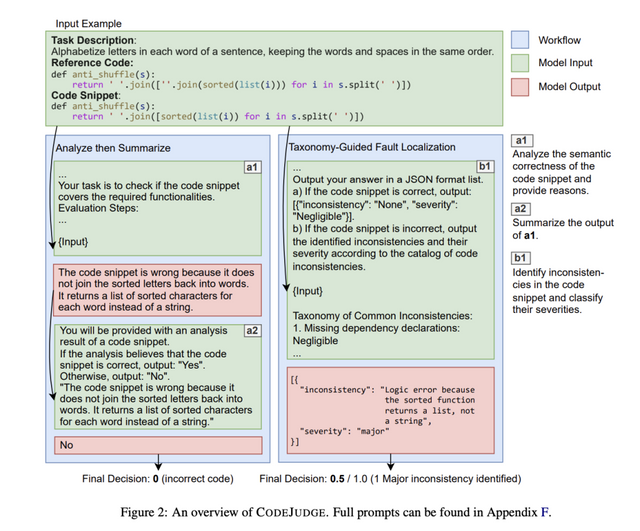CodeJudge: An Machine Learning Framework that Leverages LLMs to Evaluate Code Generation Without the Need for Test Cases
Unit testing and manual code reviews have traditionally been employed to ascertain whether the code functions correctly. These approaches are typically self contained and are restricted to the level of syntax and structure for the code. Still, there are often issues like logical errors or less-than-stellar functionality, which leads to a very superficial analysis. Moreover, generated code is not validated within different environments, which restricts its usability. On top of that, manual evaluation can take longer and be less cohesive in its overall appraisal.
A team of researchers from Huazhong University of Science and Technology and Purdue University introduced CodeJudge has made the solution even better by allowing an automated and multilayered structure, which will allow the programming problems to be scrutinized even more deeply. It can also serve as a means to give a rundown of the code’s quality and check whether or not it satisfies the syntax and has a proper form of logic through a number of dimensions. This is quite a creative proposal and does very much cover the problems that are inherent with code assessments.

The framework follows a two-step process: the first measure is syntax matching, and the second one is alignment matching according to the inputs of the end user. Following these steps is verifying the code by testing it against various environments to enhance overall functionality. Furthermore, as far as the performance criteria are concerned, the measurement of the execution time taken by the code and the amount of memory used in the process are incorporated. The typical approach of having a static analysis and dynamic analysis of the code has been tested and found to be helpful in taming the problem area.
Further experiments conducted on various LLMs revealed 25% logic errors that were missed by the conventional unit tests. Rigorous testing was done on a wide range of problems that involved algorithmic challenges to real-world applications. Multiple code generation models were used for assessing the robustness of the model.
In conclusion, this framework has proven efficient in assessing code snippets. Both structural soundness and in-depth logic were given equal importance, overcoming the limitations of the traditional methods. This approach is quite comprehensive but provides a setback due to its dependence on predefined tests that limit the adaptability in unconventional coding styles. This research offers a valuable tool for improving the quality and reliability of LLM-generated code and streamlining software development workflows.